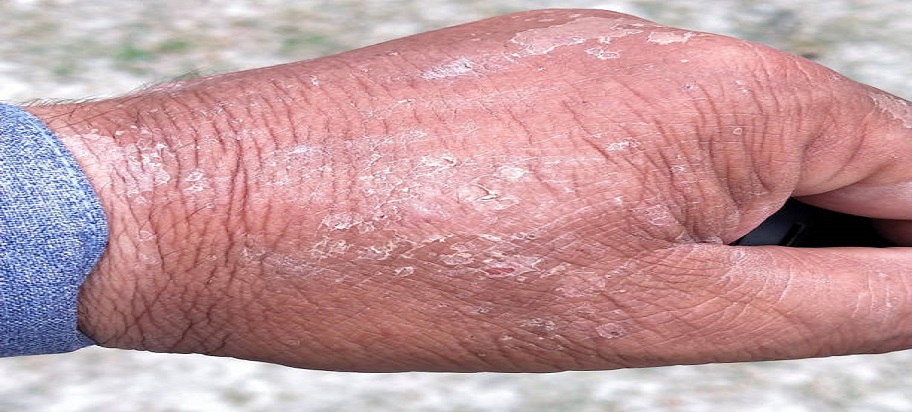Do The Hives Turn White When Press?

Introduction
White patches on your skin are nothing to be embarrassed about, and they can even be a sign of success. After all, if you’re dealing with a contagious illness, it only makes sense to show off your curves in the best way possible. But what do you know about these strange but common conditions? And how does one ascertain if you have got them? This article is for you! In this article, we will explore the causes of white patches on your skin and how to treat them.
What are the Hives?
The white patches on your skin are caused by the hive virus. The hive virus is a highly contagious and often fatal disease that can be found in different parts of the world. It’s believed that there are many different types of hive viruses and that each one can cause a different type of honeydew (a type of wax).
What are the Different Types of Hives
There are several different types of hive viruses, including:
- The common cold virus,
- SARS-CoV,
- MERS-CoV.
Each one causes a different type of honeydew and can cause various symptoms depending on which virus it is.
The most commonly occurring symptoms are:
- Sore throats,
- Blocked Nose and Throat (BNT),
- Fever,
- Body aches,
- Diarrhea,
- Vomiting,
- Even death.
What Are the Different Symptoms of the Hives
Some common symptoms of hive viruses include:
• Sore Throat:
A common symptom is feeling pain in your throat after being infected with a Hive Virus. This may be felt as soreness or redness around your tonsil or eardrum area
• Blocked Nose and Throat (BNT):
BNT is when you experience difficulties breathing because your nose and throat have been blocked.
• Fizzy Body Ache:
Feeling tired or107 feeling like you’re going to throw up.
• Depression:
Feeling down about yourself or about how sick you are.
• Diarrhea:
Seeing black liquid coming out of your anus or mouth.
• Vomiting:
Seeing green liquid coming out of your nose or mouth.
• Exercise Possible Digestive Disease (EPD):
If you have this condition while being infected with a Hive Virus. It’s possible to develop an extreme case where you vomit everything that comes up into your stomach (this is called Gastroenteritis). If this happens to someone else during their infection too, they should see a doctor immediately.
What to Do If You Have the Hives.
If you experience white hives, the first step is to get rid of the hive. Hives can easily be eliminated with a mild soap and water solution, but if the hive is extremely active, then it may need to be removed with a Hive tool. For more information on how to get rid of white hives, please see our article on how to get rid of white hives.
How to Deal with The Hives If They Are Intense
If you are experiencing intense hives, it is important to seek medical attention as soon as possible. This can include getting an EpiPen or finding a local hospital that specializes in treating bee stings. If you experience severe symptoms such as fever, chest pain, and difficulty breathing, your doctor may order an MRI or other imaging tests to rule out any serious health problems.
How to Avoid the Hives in the future
It is also important not to ignore the fact that white honey may cause some people problems down the road. If someone has been re-hiving after taking antibiotics or using other treatments for malaria (a type of yellow fever), they should contact their doctor immediately so that they can receive treatment and avoid any potential issues down the line.
How to Reduce the Risk of the Hives.
Sunscreen is one of the most important things you can do to reduce your risk of hives. A good sunscreen will protect you from UVA and UVB radiation, which is the cause of the hives. To avoid getting sunburned, be sure to apply it liberally and cover your entire body when you’re outside. And if you have a bug problem, including using an effective bug spray can also help reduce your risk of getting hives.
Use an effective Sunscreen
Another important factor to consider when planning a healthy diet for your skin is using effective sunscreen. Make sure to use a sunscreen that covers both UVA and UVB radiation, as well as any other chemicals that might be harmful to your skin. Additionally, make sure to eat plenty of fruits and vegetables, which are rich in antioxidants that may help protect against the Shimazaki virus.
Improve Your Diet to Reduce the Risk of the Hives
When it comes to improving your diet to the prevention of skin infections, it’s important to focus on whole grains, high-quality proteins, low-fat dairy products, and antioxidant-rich fruits and vegetables. This way, you’ll be able to improve your overall health while avoiding potentially harmful foods that could lead to the development of skin infections such as the yellow fever virus or SARS (severe acute respiratory syndrome).
Conclusion
Hives are common phenomena in the hive. When you have hives, it is important to take action to get rid of them. There are several ways to do this, but the most effective way is to use an effective sunscreen and improve your diet to reduce the risk of hives. If you are still experiencing symptoms after trying these measures, please see our next section for more advice on how to treat the condition.



